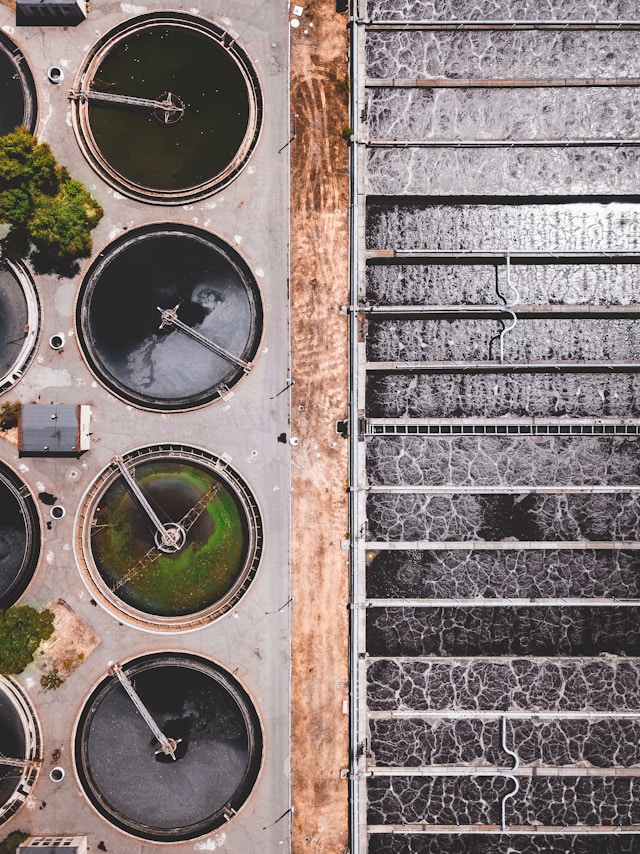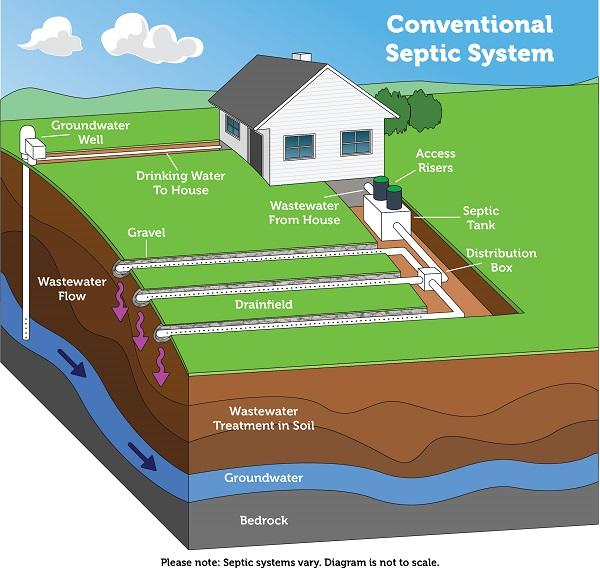
Onsite Wastewater
The Webster County Health Unit emphasizes the importance of proper onsite wastewater treatment systems (OWTS) to manage wastewater in areas without access to public sewers. These systems treat and disperse wastewater on the property where it is generated, preventing human contact with sewage and protecting surface and groundwater from contamination. Proper functioning of OWTS depends on site and soil conditions, design, installation, operation, and maintenance
Permitting
In Webster County, a permit is required for new installations or repairs of septic systems under specific conditions:
- Commercial & Business Properties: Require a permit for any new installations or repairs, regardless of acreage. The fee is $120
- Private, Single Home Properties: Require a permit if the lot is 2.99 acres or less for any new installations or repairs. The fee is $90
- Private Properties with Two or More Homes: Require a permit if the lot is 9.99 acres or less for any new installations or repairs to existing septic systems. The fee is $90
For properties exceeding these acreage limits, a permit is not required, but a soil report is still recommended to ensure proper system installation
Inspecting
Regular inspections of OWTS are crucial to ensure they are functioning correctly and to prevent environmental contamination. Inspections may be required during property sales, new construction, or when there are complaints or groundwater issues. Licensed inspectors evaluate the system’s components, including the septic tank and leach field, and perform tests such as hydraulic and dye testing to assess system performance
Lagoons
Lagoons are another method of onsite wastewater treatment used in Webster County. They are typically used for properties with larger land areas and involve a pond-like structure where wastewater is treated through natural processes. The Missouri Department of Natural Resources monitors and regulates properties that have two homes connected to a lagoon
For properties with more than 2.99 acres for a single home or 9.99 acres for two homes, a permit is not required, but a soil report is still recommended to ensure proper lagoon installation
If you have any questions or need further assistance, you can contact the Environmental Department at the Webster County Health Unit at (417) 859-2532
What the Homeowner Should Know
Many people don’t give a second thought to what happens after the toilet is flushed. But think about it…where does all of it go? How is it filtered to become safe to enter watersheds and aquifers? Here is a little overview of how a conventional septic system works. The diagram below shows the flow of things.

The type, depth, and construction of the drain-field are imperative to the proper filtration of sewage. A drain field should not just be thrown in at whatever depth or location. Oxygen is needed for the proper cleaning of sewage. So if the drain pipes are too deep then good bacteria can’t grow to destroy the harmful bacteria in the waste before it seeps down to groundwater aquifers.
There is a scientific process to ensure that the sewage is filtered properly to make it safe. Because let’s face it, what you flush is eventually what you drink. So, let’s make sure that the water we give our kids is safe.
Wastewater can be an extreme environmental hazard if not properly contained, channeled, and filtered. Creeks, rivers, wet-weather creeks, ponds, lakes and private well systems can easily become contaminated with E.coli and other bacteria if sewage is able to seep into the water.
This, in turn, can create health hazards for pets, children, wildlife, and drinking water. With many homes and businesses relying on well water in this area of the country, protecting aquifers and wells from contamination starts with ensuring wastewater systems are constructed in such a way that waste is filtered correctly through the soil.
The soil cleans and filters sewage. This first step is making sure that the wastewater drain field is constructed properly. Adhering to State Regulations will aid in ensuring that the environment and your water supply is kept clean and safe. Make sure to hire a registered State Installer and obtain a Soil Report.
Ensuring that sewage is not spilled out onto the ground or allowed to pool and become a major health and environmental risk is all of our responsibility. Please be sure that all wastewater is contained, collected, and disposed of properly and legally.
Feel free to call the Environmental office at Webster County Health Unit at 417-859-2532. We are always happy to answer your questions.
Set-Back Distances
There are regulations set in place to protect the environment and water sources from wastewater. Please refer to the images below for reference.

Soil Test
The most important step in the construction of a drain field for a septic system is to first obtain a soil morphology (also known as a soil test) of the area. This is a scientific reading of the soil types. Different soils absorb liquids differently. Ensuring that the drain field is placed in good soil is a must. There is no way of knowing if you have “good” soil unless a soil test is completed. This is a bit different than a “perk test”. But it has the same outcome, and that is determining the best type of system for the soil. A soil scientist will have the recommended septic system indicated on the report for the property in question.
The soil test allows for the area to be examined for the best location, depth, and type for a drain field for the septic system. A soil test consists of three or more pits being dug in the area of the proposed drain field or where a soil scientist believes would be best suited for a drain field. These pits are a minimum of 48” deep and are usually dug with a backhoe. The soil scientist then reads the soils per horizon and creates a soil report. This report consists of soil colors, types, consistencies, roots, and fragipans.
Bottom line…always have a soil test done no matter the acreage! If your property needs a permit through Webster County Health Unit, a soil report is required when submitting a permit application. But even if you don’t need a permit, get a soil test done! The soil scientist will have the recommended system on the report.
Why do soil colors matter?
Here is an example: gray soil colors usually indicate the soil is seasonally waterlogged, and this condition can cause septic systems to malfunction, kill plants, produce wetness problems for basements, and indicate the soil is susceptible to flooding (Buol et al., 1980). There are many different soils and soil properties found throughout Missouri, and in our neck of the woods, these differences can change from one foot to the next. Get a soil test to be sure that you are putting the best septic system for your property.
Find Registered Installers and Soil Scientists
If you need a soil scientist or a septic installer, click on the links below and select Webster County from the map to view all that are registered to work in Webster County.
Register to Install Systems in Webster County
If you are a State Registered Installer and would like to register to install systems in Webster County, please fill out the “Installers Registration Form” located under the Forms tab and send in with $25 yearly fee associated with registration.
Send to:
Webster County Health Unit
Environmental Public Health Specialist
233 E. Washington
Marshfield, Mo 65706
Have a complaint?
The Environmental Health Concern/Complaint Form is designed to help community members report issues related to sewer systems, food safety, and childcare facilities. By submitting this form, you can ensure that potential health risks are addressed promptly and efficiently by our Environmental Health Specialist.

